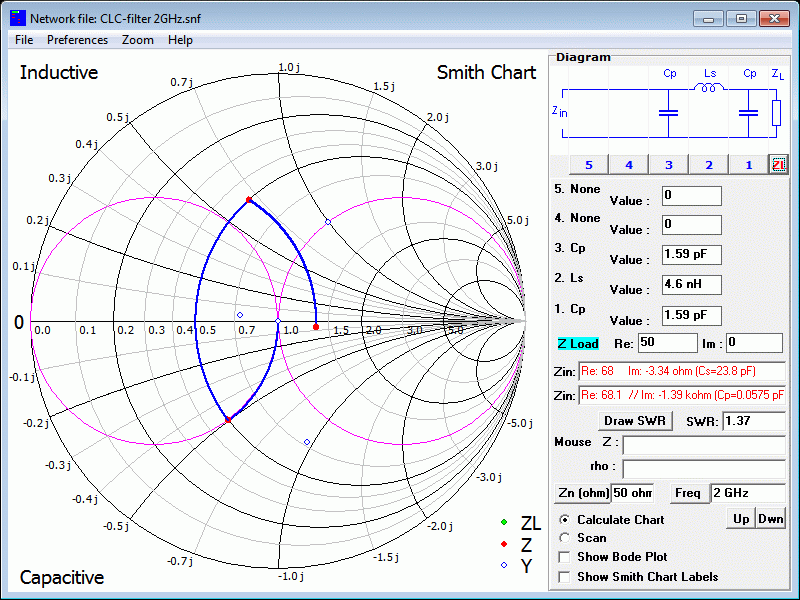

Along this curve, all of the power is reflected by the load impedance. The outter ring of the Smith Chart is where the magnitude of is equal to 1. That is, this is the only point on the smith chart where no power is reflected by the load impedance. The center of the Smith Chart is the point where the reflection coefficient is zero. In Figure 2, plotting the set of all values for the complex reflection coefficient, along the real and imaginary axis. The complex reflection coefficient, or, must have a magnitude between 0 and 1.Īs such, the set of all possible values for must lie within the unit circle: Recall that the complex reflection coefficient () for an impedance ZL attached to a transmission line with characteristic impedance Z0 is given byįor this tutorial, we will assume Z0 is 50 Ohms, which is often, but not always the case. The Smith Chart displays the complex reflection coefficient, in polar form, for an arbitrary impedance (we'll call the impedance ZL or the load impedance).įor a primer on complex math, click here. This section of the antenna theory site will present an intro to the Smith Chart basics. But for now, just admire the Smith Chart and its curvy elegance. In fact, we are going to learn an even more complicated version of the Smith Chart known as the immitance Smith Chart, which is twice as complicated, but also twice as useful. We will build up the Smith Chart from scratch, so that you can understand exactly what all of the lines mean. A larger version is shown here.įigure 1 should look a little intimidating, as it appears to be lines going everywhere. With modern computers, the Smith Chart is no longer used to the simplify the calculation of transmission line equatons however, their value in visualizing the impedance of an antenna or a transmission line has not decreased. See, for instance, the input impedance equation for a load attached to a transmission line of length L and characteristic impedance Z0. Smith Charts were originally developed around 1940 by Phillip Smith as a useful tool for making the equations involved in transmission lines easier to manipulate.

The Smith Chart is used to display a real antenna's impedance when measured on a Vector Network Analyzer (VNA). Smith Charts are also extremely helpful for impedance matching, as we will see. Smith Charts can be used to increase understanding of transmission lines and how they behave from an impedance viewpoint.

The Smith Chart is a fantastic tool for visualizing the impedance of a transmission line and antenna system as a function of frequency. SMITH CHART, SOLUTIONS OF PROBLEMS USING SMITH CHART


 0 kommentar(er)
0 kommentar(er)
